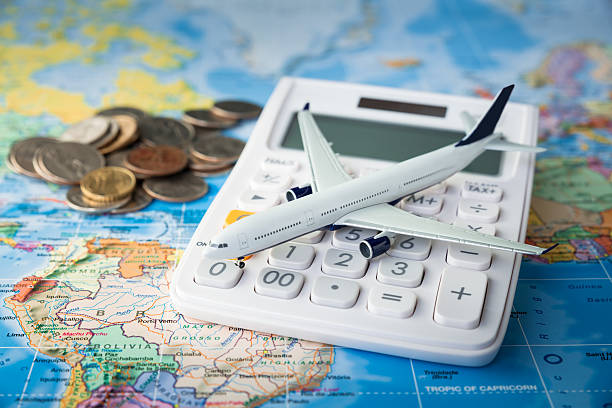How to Create a Travel Budget: A Step-by-Step Guide
Traveling is one of life’s greatest joys, but it can also be expensive. Whether you’re planning a weekend getaway or a year-long adventure, creating a realistic travel budget is essential to ensure you can enjoy your trip without the stress of financial worries. In this comprehensive guide, we’ll walk you through how to create a travel budget from start to finish—helping you save for your trip, track your spending, and adjust your plans if necessary.
Step 1: Set a Realistic Travel Goal
Before diving into budgeting, you need to clarify your travel goals. The more specific you are about your destination, the length of your trip, and the activities you want to do, the easier it will be to estimate costs. Here’s how to set your travel goals:
- Choose your destination: The location of your trip is one of the most significant factors influencing the budget. A European vacation will cost more than a Southeast Asian getaway. Research your destination to understand costs for accommodation, food, activities, and transportation.
- Decide on the trip duration: The length of your trip will directly impact your budget. A weekend getaway will cost much less than a month-long backpacking trip.
- Identify your activities: Consider the activities you want to do—guided tours, adventure sports, cultural experiences, etc. These will vary in price, and knowing what you want to do will help you allocate funds more effectively.
Step 2: Research Estimated Costs for Your Trip
Once you’ve determined your destination and trip duration, start researching the costs of major categories:
- Flights: Use flight comparison websites like Skyscanner, Google Flights, or Kayak to get an idea of the cost. Set up price alerts for the best deals.
- Accommodation: Check out hotel, Airbnb, and hostel prices. Consider your comfort level and the location. If you’re on a budget, look for hostels, guesthouses, or budget hotels, or consider booking through services like Couchsurfing.
- Daily expenses: Think about food, drinks, and transportation within your destination. Are you planning to eat at fancy restaurants or prefer local street food? Will you be using public transport, or do you need to budget for car rentals?
- Activities and excursions: Make a list of the must-do activities at your destination. Look for entrance fees to attractions, guided tours, and other experiences you want to include.
- Travel insurance: Don’t forget this important cost. Travel insurance will protect you in case of cancellations, delays, or emergencies.
Pro Tip: Consider currency exchange rates if traveling abroad. A favorable exchange rate can stretch your budget further, while an unfavorable one may require adjustments.
Step 3: Set Your Travel Budget Categories
Now that you have an estimate of your trip costs, break them down into categories for a clear budget. Here’s an example of how to structure your budget:
- Transportation: Flights, buses, trains, taxis, or car rentals.
- Accommodation: Hotels, hostels, Airbnb, or vacation rentals.
- Food: Meals, snacks, and drinks, including eating out and self-catering if you have access to a kitchen.
- Activities: Guided tours, excursions, tickets to museums or attractions.
- Travel insurance: Medical coverage, trip cancellation, or lost luggage protection.
- Miscellaneous: Shopping, souvenirs, toiletries, or any unexpected costs.
Step 4: Create a Savings Plan
Once you know how much your trip will cost, start saving. Having a clear savings plan makes it easier to reach your goal. Here are some practical steps to follow:
- Set a target amount: Add up all the categories to determine your total trip cost. Be sure to include an emergency fund (about 10% of your budget) in case something unexpected comes up.
- Establish a savings timeline: How many months do you have before your trip? Divide the total budget by the number of months to determine how much you need to save each month.
- Cut unnecessary expenses: Reduce discretionary spending by limiting things like dining out, shopping, or entertainment. Redirect these funds into your travel savings account.
- Automate your savings: Set up automatic transfers to a separate savings account to make saving easier and more consistent.
- Find additional income: If necessary, look for ways to increase your income. This could include taking on a side job, selling unused items, or taking advantage of cashback rewards or travel deals.
Step 5: Track Your Spending
Tracking your expenses while traveling helps you stay on top of your budget and avoid overspending. Use the following tips to manage your finances during your trip:
- Use budgeting apps: Apps like Mint, YNAB (You Need a Budget), or Trail Wallet are great for tracking daily expenses. These apps let you categorize spending and even set spending limits for each category.
- Set a daily budget: Break your total travel budget down into daily amounts. This helps you stay on track and avoid blowing your budget early in the trip.
- Carry a mix of payment options: While using a credit card can offer rewards and easy tracking, it’s also smart to carry cash in local currency for smaller expenses. Always keep your spending within the limits you’ve set.
- Keep receipts: Hold on to receipts for major purchases, especially for activities or tours that may have been pre-booked. This will help you track your spending more accurately at the end of each day.
Pro Tip: Be mindful of exchange rates when paying in local currency. Some places charge higher fees or give you a poor exchange rate, which can eat into your budget.
Step 6: Adjust Your Plans if Necessary
It’s important to stay flexible with your plans. Unexpected expenses or changes in your travel plans might require you to adjust your budget. Here’s how to handle it:
- Reevaluate non-essential expenses: If you find you’re running out of money, consider cutting back on activities or dining options. Opt for free experiences like hiking, walking tours, or visiting parks and museums on their free days.
- Prioritize: Focus on the experiences that matter most to you. If a particular excursion is too expensive, look for a similar, more affordable option.
- Be open to budget alternatives: If accommodation or transportation costs are higher than expected, look for budget alternatives. Consider staying in a hostel, using public transport instead of taxis, or finding last-minute deals online.
Step 7: Post-Trip Budget Check
Once your trip is over, take the time to assess your spending. Did you stick to your budget? Were there any categories where you overspent or saved more than expected? Use this information to improve your budget planning for future trips.
- Review receipts and spending: Look at the details of your trip to identify areas where you could adjust your budget next time. Did you spend too much on dining out or miss opportunities for free activities?
- Keep track of future travel goals: If you have another trip planned, use your previous experience to improve your future budgets.
Final Thoughts
Creating a travel budget can seem daunting, but with the right planning and preparation, it’s entirely manageable. By setting a clear goal, estimating costs, saving effectively, and tracking your spending on the go, you can ensure that your trip is as stress-free financially as it is exciting. So take these steps to heart, stay organized, and enjoy your travels without the worry of overspending!


